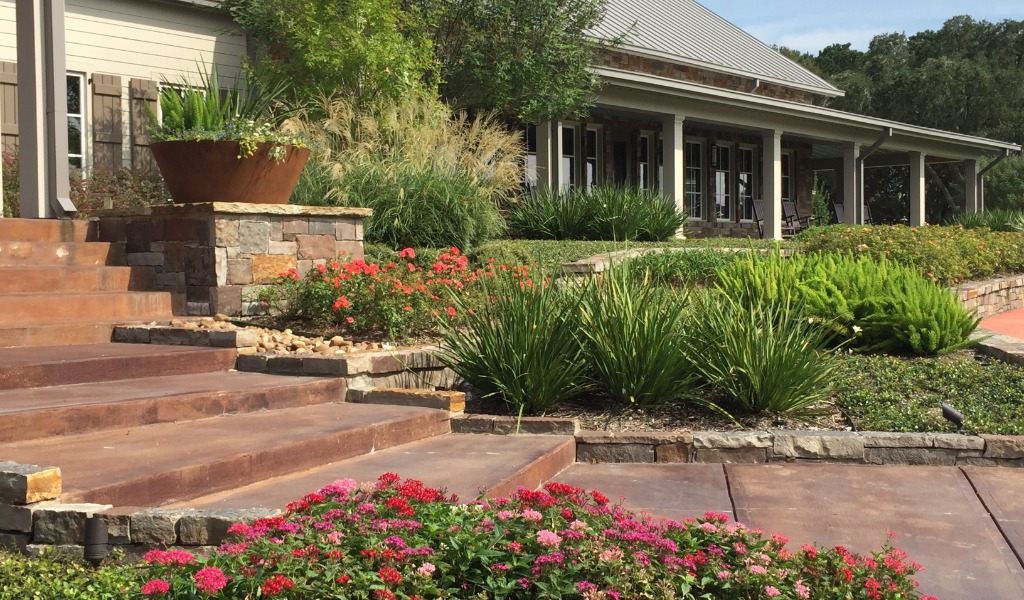What difference does a well-maintained yard make? It not only enhances your property’s curb appeal, but it also contributes to the overall health of your plants and the longevity of hardscape elements. Year-round landscape maintenance is the key to achieving a lush and thriving outdoor space. Regular care promotes plant health by ensuring proper pruning, weeding and fertilization. It also allows for early detection of pests and diseases, preventing potential damage. Aesthetic appeal is another crucial aspect, as consistent maintenance keeps your yard looking inviting. Additionally, proactive care preserves your landscaping investment by preventing costly repairs and replacements.
February is an ideal time to assess and care for your landscape. Many plants are in dormancy during this time of year, which facilitates pruning and clearing debris. As we prepare for spring growth, there is a focus on removing dead branches and addressing any challenges presented by cold winter temperatures. Getting a head start on detecting pests and diseases that may hinder growth helps set the stage for a healthy spring season, and inspecting hardscapes helps ensure they are ready for the coming months as the temperatures rise, days get longer and the growing season begins. In this article, we will explore the importance of year-round maintenance and delve into how professional maintenance crews care for both plants and hardscapes.
Keeping Plants Healthy
Professional maintenance crews typically begin with a visual inspection, looking for signs of damage, pests or disease. Once the inspection is complete, the crew can develop a strategic plan for caring for your flowering plants, shrubs, trees and grasses. Pruning dead or damaged branches helps promote healthy new growth, while checking soil moisture levels and nutrients allows for adjustments to the irrigation levels and pH balance. Weeding is another important step that serves your garden not only aesthetically, but it also helps prevent unwanted plants from drawing important nutrients away from desirable plants.
Checking Irrigation Systems
As crews begin checking irrigation systems, they will inspect the system for leaks, damaged components and overall proper functioning. Clearing debris from sprinkler heads helps ensure even, uniform water distribution and efficiency. Depending on your landscapes needs, the watering schedule or quantity may need to be adjusted to meet the needs of the seasonal temperatures and conditions. Crews will take this into consideration as they evaluate the current system, checking for soil moisture, testing water pressure and inspecting the backflow preventer. Cold weather, especially hard freezes, can cause damage to irrigation systems, making this time of year ideal for testing, repairing and adjusting your system as needed.
Caring for Hardscapes
Hardscapes, which refer to any non-living elements of your landscape design such as walkways, patios, fountains and retaining walls, can also be impacted by the elements during the winter months. Crews begin with a visual inspection, looking for visible cracks, wear, debris or damage. As there is so much variety between hardscapes, the specific plan of action will be tailored to your landscape’s unique needs. For example, weeding may be needed between pavers on a walkway while dirt and debris may need to be removed from a water feature. Harsh weather can wear down hardscape surfaces, and crews may recommend applying a sealer to protect surfaces year-round.
In conclusion, investing in year-round landscape maintenance is a strategic choice for your property. By proactively caring for plants, irrigation systems and hardscapes, you set the foundation for a healthy and visually appealing outdoor space. These tips are employed by professional crews to help ensure your landscape thrives throughout the year so that you can enjoy a vibrant, beautiful garden day in and day out. Reach out to the team at Prewett, Read & Associates to invest in bringing life to design year-round.


